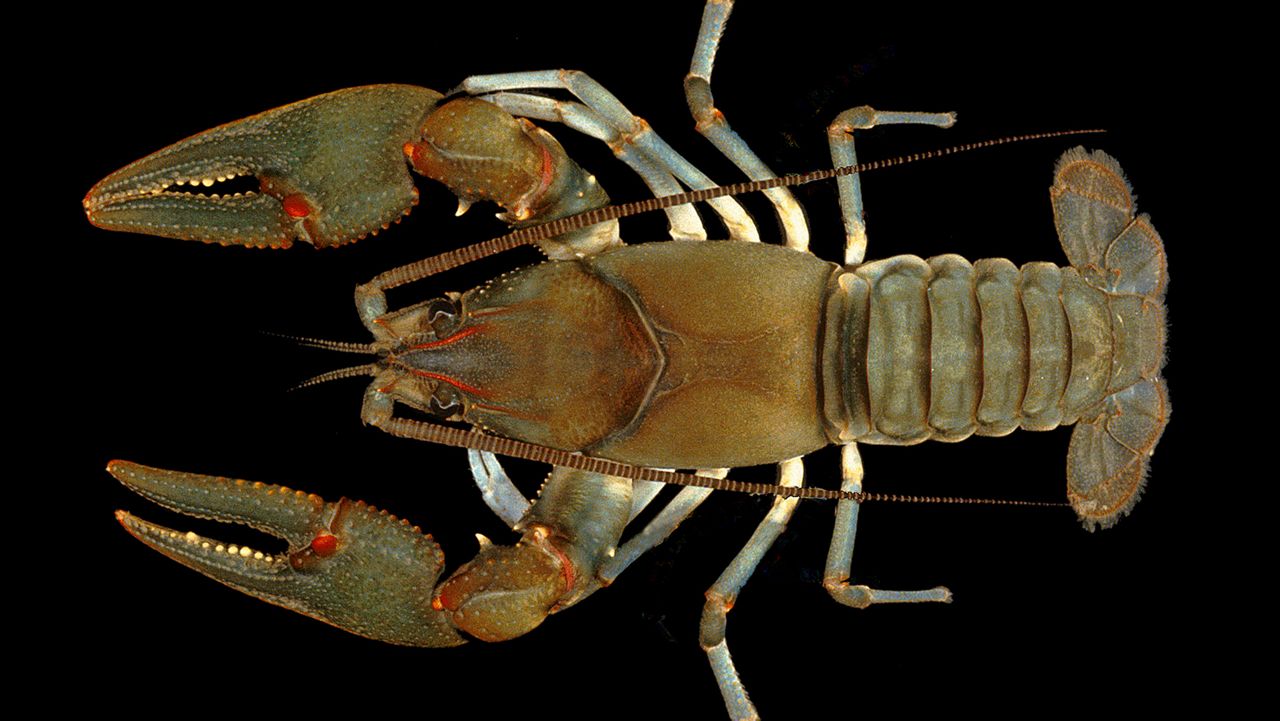LEXINGTON, Ky. — To protect two rare species of crayfish, the U.S. Fish and Wildlife Service listed 446 miles of Appalachian waterways as critical habitat, which could lead to additional scrutiny of coal mining permits in the watershed.
What You Need To Know
- Designation stems from 2018 lawsuit
- Number of protected species down 60%
- Waterways are in coal-producing areas of Kentucky, West Virginia and Virginia
- Distinction ensures more scrutiny when applying for new mining permits
In mid-March, the U.S. Fish and Wildlife Service formally designated 446 miles of streams and rivers as critical habitat for two species of crayfish, the threatened Big Sandy crayfish and the endangered Guyandotte River crayfish, which has lost more than 90% of its range and is now found in only two streams in Wyoming County, West Virginia.
Though it is already illegal to harm the crayfish, critical habitat designation adds a layer of protection, according to the Center for Biological Diversity. The designation requires any federally funded or permitted project to consult with Fish and Wildlife to ensure a crayfish habitat is not harmed. The decision followed a petition and lawsuit by the Center for Biological Diversity, West Virginia Highlands Conservancy, the Ohio Valley Environmental Coalition and the Sierra Club.
The threatened Big Sandy crayfish’s range has been reduced by more than 60% and it is found in the upper Big Sandy drainage in coal-producing areas of southern West Virginia, southwestern Virginia and eastern Kentucky. All but one of the designated critical habitats in Kentucky are in Pike County and include the Russell Fork River, Elkhorn Creek, Levisa Fork, Shelby Creek, Long Fork, Tug Fork River, Knox Creek, Peter Creek and Blackberry Creek. The section of the Tug Fork River separating Martin County, Kentucky, and Wayne County, West Virginia, is also a designated critical habitat.
“The listing has a couple of different significances,” said Perrin de Jong, staff attorney for the Center for Biological Diversity. “When a critical habitat is designated, you can’t adversely modify that habitat. The other significance is consultation: Whenever a federal agency funds or permits any activity, if they have a say in a project going forward or not, they have to work with Fish and Wildlife to ensure that the activities they’re approving don’t jeopardize protected species or adversely modify critical habitat.”
The Office of Surface Mining Reclamation and Enforcement (OSMRE) and state mining agencies must consult with the Fish and Wildlife Service (FSW) to ensure new mining permits contain terms and conditions to avoid harming the habitat.
“These unique crawdads exist nowhere else in the world and would soon be snuffed out by destructive coal mining without these essential protections,” de Jong said. “But this isn’t charity, since our fate is bound up with the fate of the crayfish. The clean water they need to survive is the same water that local residents rely on for drinking and recreation.”
OSMRE and FWS should also reopen the consultation process for existing mines considering the new designation, de Jong said.
“Ostensibly, such a consultation could lead to a jeopardy determination, particularly in the case of the Guyandotte River crawfish,” de Jong said. “These crayfish are currently found in only two creeks in Wyoming County, West Virginia. Can the service say with a straight face that any more habitat can be sacrificed?”
Sedimentation from surface coal mines often flows downstream, choking streams and either killing crawfish or negatively affecting their reproduction, according to the Center for Biological Diversity.
De Jong said he does not expect the agencies to undertake this consultation without prompting.
“The designation opens up opportunities for citizen groups to challenge these opinions,” he said. “It creates a lot more transparency and scrutiny, and gives tools for us to engage and prevent jeopardy. It’s something we’ll have to fight for every inch to make sure it results in greater scrutiny.”
Crayfish are also known as crawdads, crawfish, mudbugs and freshwater lobsters. Crayfish keep streams cleaner by eating decaying plants and animals. They are eaten by fish, birds, reptiles, amphibians and mammals, making them an important link in the food web.
In an agreement with the Center for Biological Diversity, Fish and Wildlife protected both species under the Endangered Species Act in 2016 because of habitat loss and water pollution, because of mountaintop removal and other forms of coal mining.
“Since the beginning, coal mines have been wrecking the planet for wildlife and people alike,” de Jong said. “They don’t just wipe out wildlife and de-stabilize the climate, they ruin air and water quality for local residents, too.”
The Center for Biological Diversity alleged in a 2018 lawsuit that the species were being harmed by sediment from coal mining operations that disturbed their stream habitat. The lawsuit said the Fish and Wildlife Service was not acting fast enough in designating the habitat areas.
The designation does not establish a formal conservation area or set aside lands and does not affect land ownership, according to the rule.
The designations are effective as of April 14, 2022.



